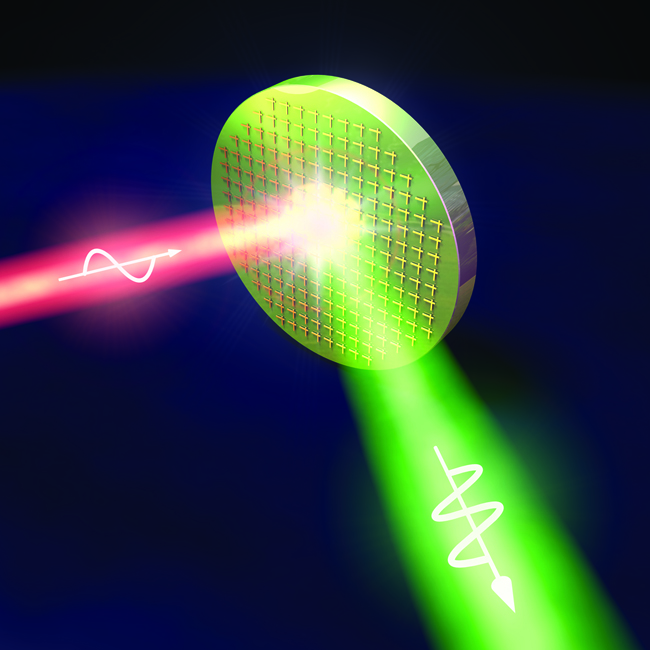Cockrell School of Engineering researchers have designed and built a "nonlinear mirror" that could improve laser technology in fields such as chemical detection and biomedical research.
“The significance of the work is that it will, in the long term, make it possible to build very small optical devices, including laser sources,” said Ahmed Tewfik, electrical and computer engineering department chair. “This, in turn, will enable the deployment of well-understood and useful optical innovations into a host of new application areas, including medical applications, scientific instruments and defense.”
The nearly yearlong research study was led by engineering professors Andrea Alu and Mikhail Belkin along with engineering graduate students. The Technical University of Munich also worked on the study with the UT researchers.
Unlike traditional nonlinear crystals, the nonlinear mirror is made up of materials that are not found in nature, called metamaterials, and can be specifically designed to have uncommon optical properties, according to Belkin.
The research team built a 400-nanometer thick mirror that doubles the frequency of the light that is shone at it by using light input intensity as small as that of a laser pointer. The nonlinear materials produce light intensities that are 1 million times more intense than those of natural materials, which helps researchers sense chemicals that they were not able to before.
“The beauty of our design is that unlike traditional nonlinear optical crystals which are limited by what nature gives you, we can play with the thickness and engineer this material to produce extremely large nonlinear optical response and to work at various wavelengths,” Belkin said.
Their research is groundbreaking in what it has shown about the use of engineered materials in extremely small laser designs, Alu said.
“This work opens a new paradigm in nonlinear optics by exploiting the unique combination of exotic wave interaction in metamaterials and of quantum engineering in semiconductors,” Alu said.
Along with possible biomedical applications, the mirror helps sense dangerous chemicals and gases that are not visible to the naked eye. This sensing is done in the mid-infrared spectral range, according to Belkin.
“If you are able to see in the mid-infrared range, then all the dangerous gases will have very specific colors, and so if you have a laser source with very specific wavelengths, you can use it to detect the presence of gas in the air,” Belkin said. “The nonlinear mirror can help us to generate these specific wavelengths.”
The metamaterials were grown with the help of collaborators at the Walter Schottky Institute of the Technical University of Munich, but much of the research and work that went into designing, building and testing the nonlinear mirror took place at the electrical and computer engineering department at UT as well as the Pickle Research Center, according to Tewfik.
According to Belkin, though this invention is a big step forward for nonlinear technology, there is still a lot of work to be done and many improvements still to be made.





















